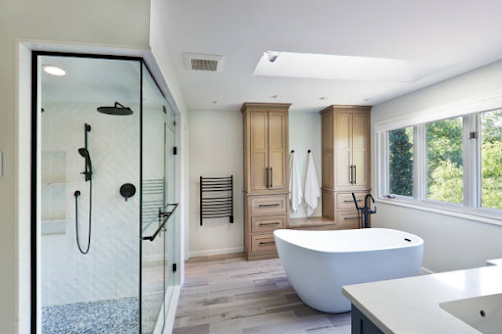The Ultimate Guide to Choosing the Perfect Bathroom Vanity
The bathroom vanity is a critical component of any bathroom remodel or renovation. Not only does it provide essential storage for toiletries and other items, but it also serves as a centerpiece of the bathroom's overall aesthetic. With so many options available, choosing the perfect bathroom vanity can be overwhelming. However, by considering a few key factors, you can select the perfect vanity for your bathroom.
Size and Layout
The first factor to consider when choosing a bathroom vanity is the size and layout of your bathroom. The vanity should fit comfortably in the space without obstructing movement or access to other bathroom fixtures. Additionally, the size of the vanity should be proportional to the size of the bathroom. In a smaller bathroom, a larger vanity may overwhelm the space, while a smaller vanity in a larger bathroom may look out of place.
When considering the layout of your bathroom, also think about how you will use the vanity. Will it be a single or double sink? Do you need additional counter space for grooming or applying makeup? These considerations will help determine the size and style of the vanity that will work best for your needs.
Style and Material
Once you have determined the size and layout of your bathroom, you can start to consider the style and material of the vanity. Bathroom vanities come in a wide range of styles, from sleek and modern to traditional and ornate. When selecting a style, consider the overall aesthetic of your bathroom and choose a vanity that complements it.
The material of the vanity is also an essential consideration. Common materials include wood, metal, glass, and stone. Each material has a unique look and feel, so choose one that fits your bathroom vanities design. Additionally, consider the durability and maintenance requirements of each material. For example, wood vanities may require more maintenance than metal or glass vanities.
Storage Options
Storage is a critical function of any bathroom vanity. When selecting a vanity, consider the storage options it provides. Does it have drawers or cabinets? Are there shelves or open storage areas? How much storage space do you need for your toiletries and other items?
Additionally, consider the organization of the storage space. Are there compartments or dividers that will help keep your items organized? Is there enough space for larger items like towels or cleaning supplies?
Sink Type
The sink is another essential consideration when choosing a bathroom vanity. There are several sink types to choose from, including undermount, vessel, and integrated sinks. Undermount sinks are mounted beneath the countertop for a seamless look, while vessel sinks sit on top of the countertop for a more dramatic appearance. Integrated sinks are built into the countertop for a sleek and modern look.
When choosing a sink type, consider the style of the vanity and the overall aesthetic of your bathroom. Additionally, think about the functionality of the sink. Do you prefer a single or double sink? What size sink do you need for your daily routine?
Countertop Material
The countertop is another critical element of any bathroom vanity. It not only provides a functional workspace for grooming and other tasks but also adds to the overall aesthetic of the vanity. Countertops are available in a wide range of materials, including granite, marble, quartz, and laminate.
When selecting a countertop material, consider the durability and maintenance requirements of each option. Granite and marble are beautiful but may require more maintenance than quartz or laminate. Additionally, think about the color and pattern of the countertop and how it will complement the overall style of your bathroom.
Plumbing Requirements
When choosing a bathroom vanity, it's essential to consider the plumbing requirements. The location of the existing plumbing in your bathroom will determine where the vanity can be placed and what type of sink and faucet can be installed.
If you are doing a complete bathroom renovation, you have more flexibility in terms of plumbing placement. However, if you're just replacing an existing vanity, you'll need to work within the constraints of the existing plumbing.
It's important to measure the distance between the existing drain and the wall to ensure that the new vanity will fit properly. Additionally, consider the height of the plumbing, as some vanities require a specific height to accommodate the sink and faucet.
When choosing a sink and faucet, make sure that they are compatible with the existing plumbing. If you're unsure about the plumbing requirements, consult with a plumber or contractor before making a final decision.
In addition to the plumbing requirements, consider the ease of installation when choosing a vanity. Some vanities may require professional installation, while others can be installed by a knowledgeable DIYer. Make sure to read the installation instructions carefully and assess your own skill level before making a decision.
By considering these six key factors - size and layout, style and material, storage options, sink type, countertop material, and plumbing requirements - you can choose the perfect bathroom vanity for your needs. Taking the time to research and plan your vanity selection will help ensure that you are happy with the final result and that your new vanity provides both functional storage and aesthetic appeal in your bathroom.


Comments
Post a Comment